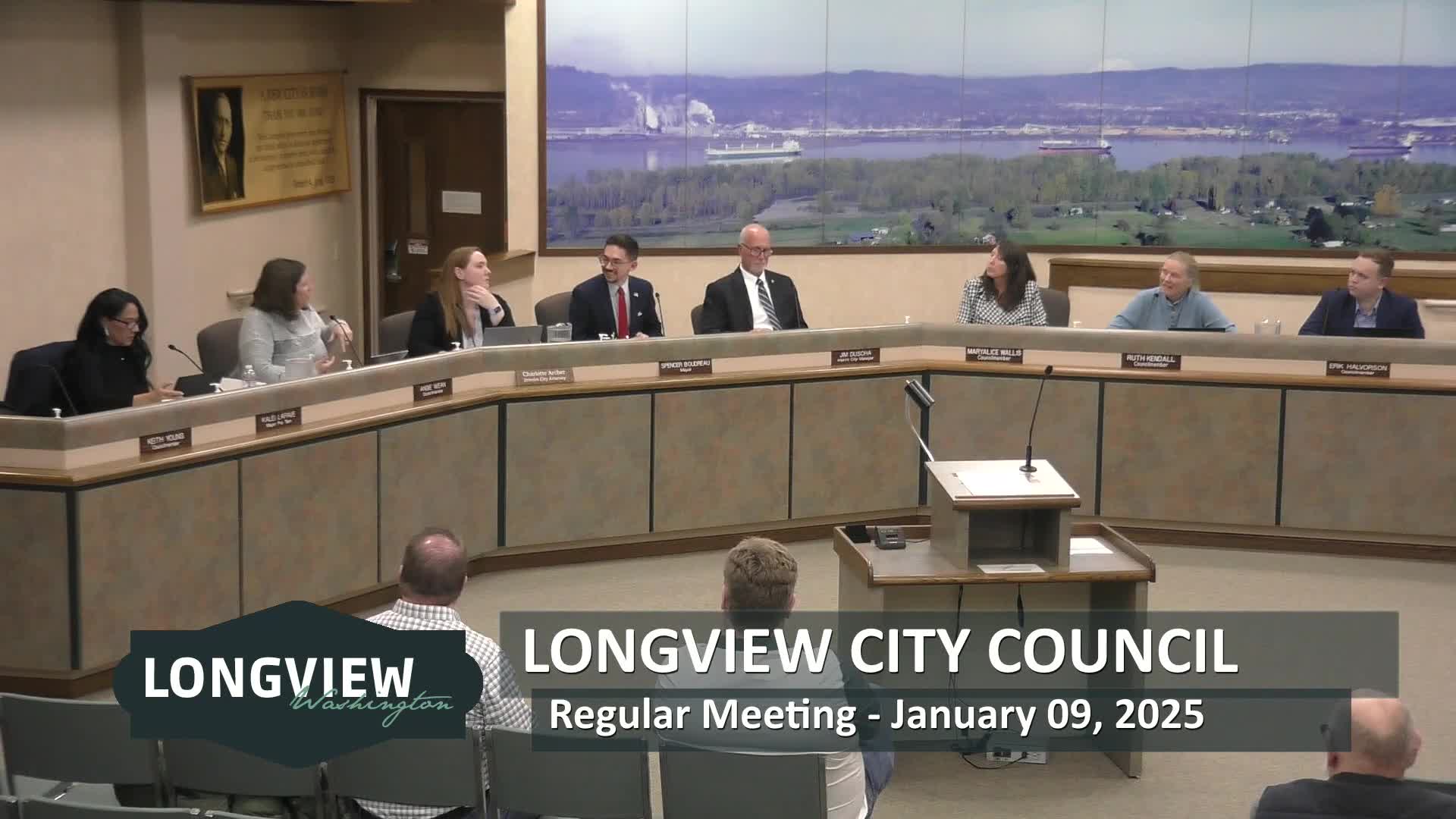City Council approves $320K utility rate reduction program for low-income seniors and disabled residents
January 09, 2025 | Longview City, Cowlitz County, Washington
This article was created by AI summarizing key points discussed. AI makes mistakes, so for full details and context, please refer to the video of the full meeting. Please report any errors so we can fix them. Report an error »

The Longview City Council convened on January 9, 2025, to address several key agenda items, including the approval of contracts and a resolution concerning utility rate reductions for low-income residents.
The meeting began with discussions surrounding the signing of contracts, which were noted to be retroactive to January 9, 2024. Council members expressed gratitude for the efforts of Chief Hannigan and the team involved in establishing these contracts, highlighting the collaborative nature of the work.
Following this, the council moved on to Resolution 2539, which proposed raising the annual aggregate limit for the utility rate reduction program to approximately $320,000. This program is designed to assist low-income seniors and disabled citizens, providing significant discounts on sewer and garbage charges, as well as waiving stormwater fees. Currently, about 400 participants benefit from this program, but the existing cap of $220,000 has been exceeded by $20,000, limiting the acceptance of new applications.
The council discussed the necessity of increasing the cap to accommodate rising utility rates and the growing need for assistance. It was noted that the cap had not been raised since 2020, despite historical adjustments being made in response to income limit increases and inflation. The proposed changes would allow for an estimated 550 residents to participate in the program, with a minimal cost impact on ratepayers.
Council members engaged in a thorough discussion about the future of the program, suggesting a more systematic approach to adjusting the cap based on percentage increases in utility rates. This would prevent the council from facing similar limitations in the future.
After deliberation, a motion was made to adopt Resolution 2539, which was seconded and subsequently passed without opposition. The council's actions reflect a commitment to supporting vulnerable community members amid rising utility costs.
In conclusion, the meeting underscored the council's proactive approach to addressing community needs through effective policy adjustments and collaborative efforts, ensuring that essential services remain accessible to those who require assistance.
The meeting began with discussions surrounding the signing of contracts, which were noted to be retroactive to January 9, 2024. Council members expressed gratitude for the efforts of Chief Hannigan and the team involved in establishing these contracts, highlighting the collaborative nature of the work.
Following this, the council moved on to Resolution 2539, which proposed raising the annual aggregate limit for the utility rate reduction program to approximately $320,000. This program is designed to assist low-income seniors and disabled citizens, providing significant discounts on sewer and garbage charges, as well as waiving stormwater fees. Currently, about 400 participants benefit from this program, but the existing cap of $220,000 has been exceeded by $20,000, limiting the acceptance of new applications.
The council discussed the necessity of increasing the cap to accommodate rising utility rates and the growing need for assistance. It was noted that the cap had not been raised since 2020, despite historical adjustments being made in response to income limit increases and inflation. The proposed changes would allow for an estimated 550 residents to participate in the program, with a minimal cost impact on ratepayers.
Council members engaged in a thorough discussion about the future of the program, suggesting a more systematic approach to adjusting the cap based on percentage increases in utility rates. This would prevent the council from facing similar limitations in the future.
After deliberation, a motion was made to adopt Resolution 2539, which was seconded and subsequently passed without opposition. The council's actions reflect a commitment to supporting vulnerable community members amid rising utility costs.
In conclusion, the meeting underscored the council's proactive approach to addressing community needs through effective policy adjustments and collaborative efforts, ensuring that essential services remain accessible to those who require assistance.
View full meeting
This article is based on a recent meeting—watch the full video and explore the complete transcript for deeper insights into the discussion.
View full meeting
